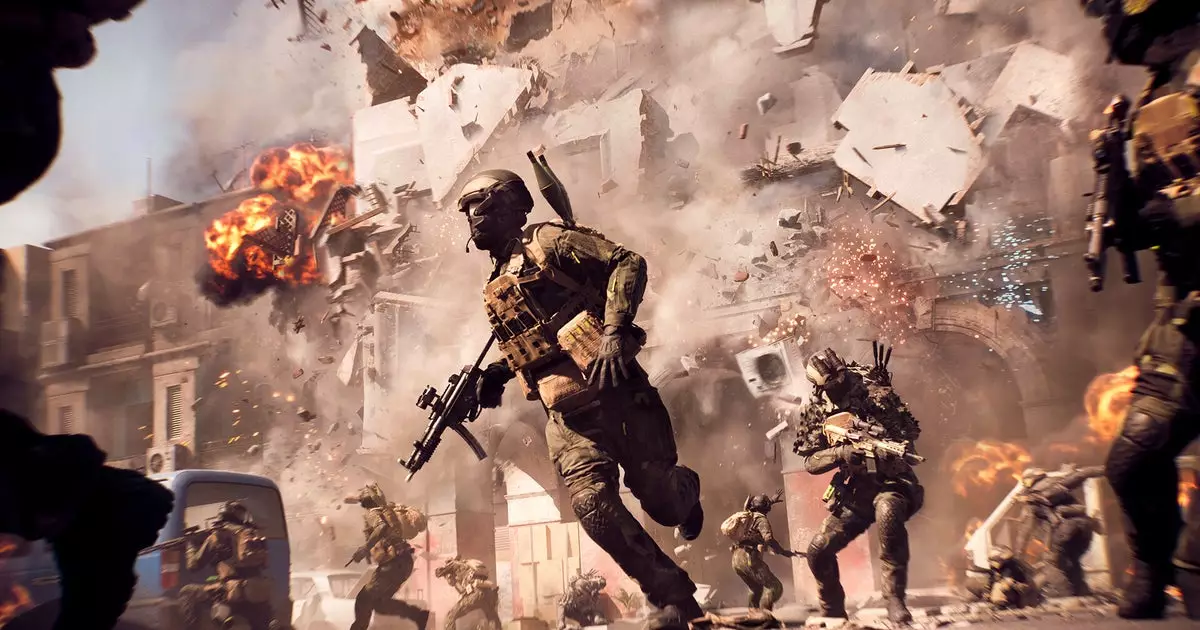The excitement surrounding Battlefield 6’s reveal signals a renewed confidence in the franchise’s ability to deliver cutting-edge multiplayer experiences. Yet, alongside that enthusiasm comes a critical need to evaluate what this means for gamers eager to jump into the chaos. The recent disclosures about system requirements and platform specifics reveal not only the architectural demands of the game but also reflect broader trends in the gaming industry’s approach to accessibility, distribution, and user experience.
What stands out immediately is the clear delineation between minimum and recommended specs, which are crucial metrics for players trying to assess whether upgrading their existing systems is worth the investment. At first glance, the requirements don’t seem overly demanding—if your PC isn’t more than five years old, there’s a decent chance your rig can handle Battlefield 6 with minimal fuss. However, such assessments require a deeper scrutiny, especially when considering the performance quality, frame rates, and graphical fidelity that will define the gameplay experience.
Hardware Demands and the Reality of Performance
The minimum specs list a relatively modest CPU, such as an Intel Core i5-7600K or AMD Ryzen 3 1200, paired with a graphics card like the Nvidia RTX 2060 or AMD Radeon RX 5600 XT 6GB. While these are reasonable for gamers with mid-tier systems, the true question revolves around how well the game will perform under these settings. Will players face choppy frame rates, distracting bugs, or compromised visuals? EA’s reticence to specify detailed performance metrics leaves us playing a game of educated guesswork, speculating whether a “minimum” rig will translate into a playable experience or a frustratingly underwhelming one.
The recommended specs suggest a significant leap, emphasizing more powerful processors—such as an Intel Core i7-10700 or AMD Ryzen 7 3700X—and enhanced graphics. These indicate that to truly enjoy Battlefield 6 at its best, gamers should be prepared to delve into the realm of high-end hardware. What’s concerning is that the gap between minimum and recommended requirements isn’t just about smooth frame rates but also about the quality of immersion—visuals, effects, and overall fluidity. Historically, the Battlefield franchise has struggled at launch, plagued by bugs and performance issues, and while EA promises improvements, these hardware prerequisites hint at a game that demands serious PC muscle to truly shine.
Platforms and Digital Rights Management: A Source of Frustration
An aspect worth critical reflection is EA’s choice of distribution platforms and DRM policies. For Steam users, there’s good news: no mandatory EA app launch is necessary, streamlining the process and reducing headaches. However, an EA account remains non-negotiable, embedding yet another layer of digital bureaucracy. The requirement of an EA account, regardless of platform, raises questions about data privacy, control, and the user experience—especially for those who prefer seamless gameplay without juggling multiple accounts or apps.
Conversely, players who opt to purchase Battlefield 6 via the Epic Games Store face additional hurdles. They will need both the EA app and an EA account to access multiplayer—an unwelcome layer of complexity that might discourage casual players or those wary of platform bloat. These platform-specific policies reflect an ongoing industry trend: the balancing act between lucrative store partnerships and the user experience, which unfortunately often tips toward inconvenience rather than convenience.
Accessibility and the Franchise’s Future Outlook
EA’s assurance that “you do not need to have played any other Battlefield game to understand or enjoy Battlefield 6” seems promising on the surface, suggesting a welcoming entry point for new players. Still, it subtly hints at the franchise’s ongoing struggle to evolve beyond its roots. Somehow, the mysterious implications about whether an understanding of battles, fields, or combat mechanics will be necessary reveal a deeper question: can a shooter thrive on simple accessibility while still delivering layered, strategic gameplay?
The franchise’s future hinges on striking this balance. Battlefield’s core appeal has always been its chaotic, immersive multiplayer battles—a genre-defining experience that keeps players hooked through adrenaline, tactics, and teamwork. Whether Battlefield 6 can meet or exceed these expectations depends heavily on how well it manages technical performance and platform integration, alongside delivering a compelling, accessible narrative for newcomers.
This entire reveal, replete with spec requirements and platform policies, underscores the importance of patience, critical assessment, and cautious optimism. EA is clearly aiming for a broad audience, but the path they’ve laid out suggests a game that will require some investment—both in hardware and in understanding the nuances of digital ownership and access. Whether Battlefield 6 will be a breakout success or a challenging launch remains to be seen, but one thing is certain: the stakes have never been higher for the franchise to prove its enduring relevance in the competitive landscape of modern multiplayer shooters.

